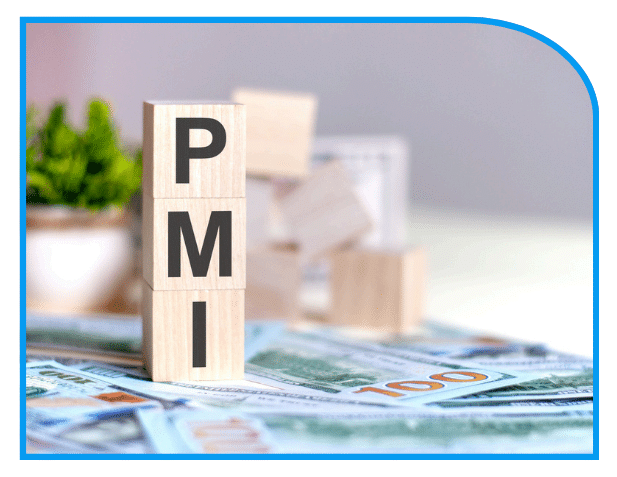How Does an Appraisal Higher Than the Purchase Price Affect PMI?
A property transaction where the appraisal is higher than the purchase price offered has a direct effect on PMI. This acronym stands for Private Mortgage Insurance. Usually, a mortgage application requires the buyer to put down a 20% deposit or take out PMI to cover any shortfall of this amount.
PMI is essential to protect the institution giving you the loan against a possible default. A higher appraisal can help you by adding equity to the home that you want to buy. This lowers the amount of PMI that you will need. Read more here: “Is PMI Based on Appraised Value?”
Triangle Appraisal Group is a group of expert appraisers. We know the property market inside out. We offer you the benefit of our regional and local knowledge and our close working relationships with estate agents and brokers.
What Happens When an Appraisal Is Higher?
The function of an appraisal is to determine the mortgage loan to value ratio (LTV). LTV is a percentage value calculated by dividing the loan amount by the lower amount of the sales price or the appraised value. When the appraised value is higher than the purchase price, this is good news for the buyer.
Let’s illustrate this by way of an example:
- Your contract to buy a house for $300,000.
- You can’t afford to put down a 20% deposit, so you opt for 10%.
- You put down a 10% deposit of $30,000 and apply for a loan of $270,000.
- The initial LTV is $270,000 ÷ $300,000 = 0.9 x 100 or 90%.
- However, the subsequent appraisal comes in higher than the purchase price at $310,000.
- This is good news for you as the LTV remains unchanged, leaving you with a built-in equity of $30,000 + $10,000 = $40,000.
- On a percentage basis, your equity in the property would now be approximately 13.3% rather than just 10%.

Does a Higher Appraised Value Reduce PMI?
An appraisal that is higher than the purchase price puts you further down the path of paying off your PMI. It adds equity to your newly purchased home and reduces the shortfall in your less than 20% deposit. Consequently, the amount of PMI you need will be lower.
Let’s continue with the example from the previous section:
- The appraised value was higher than the purchase price, giving you 13.3% equity in your new home rather than just your initial deposit of 10%.
- Most PMI policies are structured so that they automatically cease when you reach 22% equity.
- Instead of having to pay PMI until you have added another 22% – 10% = 12% equity, you’ll only have to pay until you’ve added another 22% – 13.3% = 8.7% equity.
There are other options.
- You can apply to cancel your PMI when you reach 20% equity
- You can stop paying PMI sooner if you can prove that your house has appreciated in value by way of a new appraisal.
- You can refinance your mortgage to reduce PMI.
Read More: How to Get Rid of PMI
What Happens if the Appraisal Is Lower Than the Purchase Price?
If the appraised value is lower than the purchase price, this is bad news for the buyer. It reduces the equity your deposit puts into the property. This can have several knock-on effects.
Here’s our example again, but with a lower appraisal:
- Your contract to buy a house for $300,000 with a 10% deposit of $30,000 and apply for a $270,000 loan.
- The appraisal values the house at $290,000, which is $10,000 lower than the sales price.
- The final LTV is now calculated at $270,000 ÷ $290,000 = 0.93 x 100 or 93%.
- This means that you would have to put down $10,000 more as the mortgage amount offered by the lender would be reduced to about $260,000 and push up the PMI.
Hopefully, the seller agrees to lower the sales price. You may be able to renegotiate terms to allow the higher LTV, but this affects the closing cost and interest rate. Other possibilities are to contest the appraisal or try to cancel the contract.
How To Get the Highest Appraisal: Guidelines
Here are some tips for maximizing the value:
Consider Engaging a Local Appraiser
It’s beneficial to seek out a skilled appraiser familiar with your area. An ideal choice would be someone with strong history of evaluating homes in your neighborhood, ensuring a precise estimation of the sales price.
Provide Comparables to the Appraiser
Compile a short list of similar properties in your neighborhood, in terms of features and facilities. Research the recent selling prices of nearby properties. Try to provide the appraiser with a few “comps”.
Implement High Impact Renovations
Some simple renovations will give a house an instant facelift and affect your home appraisal value. You can read about these small improvements in our blog, “How to Prepare for a Home Appraisal: 7 Tips to Increase Your Home’s Worth”.
Record Home Improvements
A few minor renovations can’t increase the value of your house unless you can prove the work done since the last evaluation. Ensure that you keep receipts and maintain a list of completion dates, contractor details, and costs
Recognize the Market
Your house is only worth what someone is willing to pay for it. Investigate what buyers want and replicate these features. View listings and visit properties that have sold for higher than expected prices, then apply what your research shows.
Let TAG Be Your Guide
If you don’t have enough cash to put down a 20% deposit, your lender requires you to buy PMI. Getting an appraisal higher than the purchase price affects PMI. You can instantly start building up equity in your new home and shorten the time needed to eliminate this added expense.
There are many actions that you can take to get a true and trustworthy valuation of your property. Triangle Appraisal Group are realty specialists in the Triangle, Triad, and Fayetteville areas. We bring a wealth of experience to every single appraisal across 20 counties. Contact us today for top-notch service.
Start Your Appraisal Journey Today!

Peter Bimonte
Extremely flexible…On time, thorough and knowledgeable…I would recommend them for your next home appraisal without hesitation…5 Stars!
Peter Bimonte

Duwayne Evans
I can’t explain how thankful I am to have a such a wonderful appraisal company at my fingertips. They’re very professional and have fast response times.
Duwayne Evans

Maurice Ellis
I’m very pleased with the way Triangle Appraisal Group conducted business me Kevin was very professional explaining the process and walking me through everything
GREAT JOB. THANKS
Maurice Ellis

D
In working Vicki and Amber, we were extremely pleased with not only how quickly our home + property appraisal was scheduled, but with how professionally the entire process was completed. And, it only took 2 business days for the appraisal to be created and sent to us.
I would highly recommend Triangle Appraisal Group to anyone seeking an experienced team for this service!
D

Stephanie Howard
From the minute, I called Triangle Appraisers to the day I received the appraisal report, I was extremely impressed! Vickie responded immediately to every question or request. This was the easiest most efficient transaction I have had with a business in years! I highly recommend this firm for any of your real estate needs!
Stephanie Howard

Alexandra Saywell-Wade
Triangle Apprasial Group was amazing to work with . They’re so knowledgeable of the housing Apprasial process, housing market. They are quick to reach out to you and have great customer service , punctual and give you a very Detailed report. I recommend them to anyone who needs an appraisal.
Alexandra Saywell-Wade

William Reid
This company was very prompt in answering my online request. Their evaluator was very respectful of our property. Very professional from start to end.
William Reid

Alyssa Baker
TAG has been so helpful and friendly ever step of the way. The appraiser was prompt and courteous. I would absolutely recommend!
Alyssa Baker

Deborah Jordan
They are professional putting the needs of customer first. Taking the time to listen, help you work through struggles. They also work in a timely manner. This is the best deal for meeting your needs. I am a valued customer.
Deborah Jordan

May Love
Outstanding appraisal experience. Expertise and timeliness exceeded expectations. Incredibly accommodating appraiser! Went the extra mile for my rent analysis as well. Impressive service. Thank you Matthew, Vicki and TAG!


